Resources
Selecting a Rapid Prototyping Process
There are many of ways prototypes can be made. As prototype processes continue to evolve, product designers are constantly trying to determine which method or technology is best for their unique application. This white paper explores the advantages and shortcomings of the major prototyping processes now available to designers. It provides process descriptions and discusses material properties of parts produced by each specific prototyping option. In addition, a helpful tree highlights key questions designers must consider when choosing a prototyping process. Ultimately, the goal is to help you select the best prototyping process for your product development cycle.
Comparing Prototyping Processes
| SLA | STEREOLITHOGRAPHY |
|---|---|
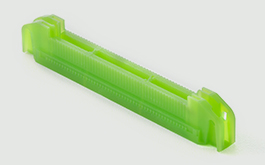 |
SLA is an industrial 3D printing, or additive manufacturing, process that builds parts in a pool of UV-curable photopolymer resin using a computer controlled laser. The laser is used to trace out and cure a cross-section of the part design on the surface of the liquid resin. The solidified layer is then lowered just below the surface of the liquid resin and the process is repeated. Each newly cured layer adheres to the layer below it. This process continues until the part is completed.
Pros
For concept models, cosmetic prototypes, and complex designs, SLA can produce parts with intricate geometries and excellent surface finishes as compared to other additive processes. Cost is competitive and the technology is available from several sources.
Cons |
| SLS | SELECTIVE LASER SINTERING |
|---|---|
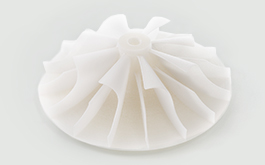 |
SLS is one of five additive processes available at Protolabs. During the SLS process, a computer-controlled CO2 laser draws onto a hot bed of nylon-based powder from the bottom up, where it lightly sinters (fuses) the powder into a solid. After each layer, a roller lays a fresh layer of powder on top of the bed and the process repeats. SLS uses either rigid nylon or elastomeric TPU powders similar to actual engineering thermoplastics, so parts exhibit greater toughness and are accurate, but have rough surface and lack fine details. SLS offers a large build volume, can produce parts with highly complex geometries and create durable prototypes.
Pros
SLS parts tend to be more accurate and durable than SLA parts. The process can make durable parts with complex geometries, and is suitable for some functional testing.
Cons
The parts have a grainy or sandy texture and the process has a limited resin choice. |
| DMLS | DIRECT METAL LASER SINTERING |
|---|---|
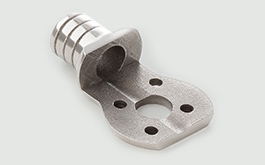 |
DMLS is an additive manufacturing technology that produces metal prototypes and functional, end-use parts. DMLS uses a laser system that draws onto a surface of atomized metal powder. Where it draws, it welds the powder into a solid. After each layer, a blade adds a fresh layer of powder and repeats the process. DMLS can use most alloys, allowing prototypes to be full-strength, functional hardware made out of the same material as production components. It also has the potential, if designed with manufacturability in mind, to transition into metal injection molding when increased production if needed
Pros
DMLS produces strong (typically, 97 percent dense) prototypes from a variety of metals that can be used for functional testing. Since the components are built layer by layer, it is possible to design internal features and passages that could not be cast or otherwise machined. Mechanical properties parts are equal to conventionally formed parts.
Cons |
| FDM | FUSED DEPOSITION MODELING |
|---|---|
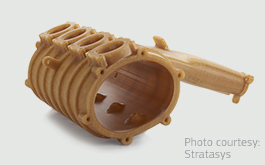 |
FDM uses an extrusion method that melts and re-solidifies thermoplastic resin (ABS, polycarbonate, or ABS/polycarbonate blend) in layers to form a finished prototype. Because it uses real thermoplastic resins, it is stronger than binder jetting and may be of limited use for functional testing.
Pros
FDM parts are moderately priced relatively strong, and can be good for some functional testing. The process can make parts with complex geometries.
Cons |
| MJF | MULTI JET FUSION |
|---|---|
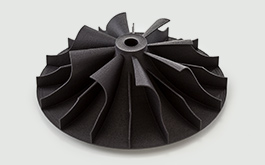 |
MJF uses an inkjet array to selectively apply fusing and detailing agents across a bed of nylon powder, which are then fused by heating elements into a solid layer. After each layer, powder is distributed on top of the bed and the process repeats until the part is complete. When the build finishes, the entire powder bed with the encapsulated parts is moved to a processing station where a majority of the loose powder is removed by an integrated vacuum. Parts are then bead blasted to remove any of the remaining residual powder before ultimately reaching the finishing department where they are dyed black to improve cosmetic appearance.
Pros
MJF is fast—producing functional nylon prototypes and end-use production parts in as fast as one day. Final parts exhibit quality surface finishes, fine feature resolution, and more consistent mechanical properties when compared to processes such as SLS.
Cons
Currently MJF is limited to PA12 nylon, and SLS has better small feature accuracy (small feature tolerances). |
| PJET | POLYJET |
|---|---|
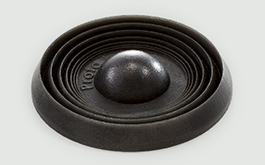 |
PolyJet uses a print head to spray layers of photopolymer resin that are cured, one after another, using ultraviolet light. The layers are very thin allowing quality resolution. The material is supported by gel matrix that is removed after completion of the part. Elastomeric parts are possible with PolyJet.
Pros
This process is moderately priced, can prototype overmolded parts with flexible and rigid materials, can produce parts in multiple color options, and easily duplicates complex geometries.
Cons
PolyJet parts have limited strength (comparable to SLA) and are not suitable for functional testing. While PolyJet can make parts with complex geometries, it gives no insight into the eventual manufacturability of the design. Also, colors can yellow when exposed to light over time. |
| CNC | COMPUTER NUMERICALLY CONTROLLED MACHINING |
|---|---|
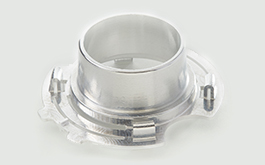 |
In machining, a solid block (or rod stock) of plastic or metal is clamped into a CNC mill or lathe respectively and cut into a finished part through a subtractive process. This method generally produces superior strength and surface finish to any additive manufacturing process. It also has the complete, homogenous properties of the plastic because it is made from solid blocks of extruded or compression molded thermoplastic resin, as opposed to most additive processes, which use plastic-like materials and are built in layers. The range of material choices allows parts to be made with the desired material properties, such as: tensile strength, impact resistance, heat deflection temperatures, chemical resistance, and biocompatibility. Good tolerances yield parts suitable for fit and functional testing, jigs and fixtures, and functional components for end-use applications. A number of manufacturers, including Protolabs, use 3-axis milling and 5-axis indexed milling processes along with turning to manufacture parts in a range of engineering-grade plastics and metals.
Pros
Machined parts have good surface finishes and are quite strong because they use engineering-grade thermoplastics and metals. Like 3D printing, custom prototypes can be delivered in as fast as one day at some suppliers.
Cons
There may be some geometry limitations associated with CNC machining, and it is sometimesmore expensive to do this in-house than 3D printing processes. Because the process is removing material instead of adding it, milling undercuts can sometimes be difficult. |
| IM | INJECTION MOLDING |
|---|---|
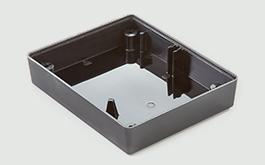 |
Rapid injection molding works by injecting thermoplastic resins into a mold, just as in production injection molding. What makes the process “rapid” is the technology used to produce the mold, which is often made from aluminum instead of the traditional steel used in production molds. Molded parts are strong and have excellent finishes. It is also the industry standard production process for plastic parts, so there are inherent advantages to prototyping in the same process if the situation allows. Almost any engineering-grade plastic or liquid silicone rubber (LSR) can be used, so the designer is not constrained by the material limitations of the prototyping process.
Pros
Molded parts are made from an array of engineering-grade materials, have excellent surface finish, and are an excellent predictor of manufacturability during the production phase.
Cons |
- What do we need to pay attention to the plastic mold machining process and machining procedures?
- What kinds of plastic mold materials?
- What is the process of mold manufacturing?
- What should be paid attention to the polishing of injection molds?
- What is easy to ignore when maintaining and overhauling injection molds?
- What are the 6 systems of plastic molds?
- What are the methods of strengthening the surface of injection molds?
- What are the methods of insulation for injection molds?
- How to solve the problem of injection mold release difficulty?
- How can we increase the brightness of ABS injection molded parts?














